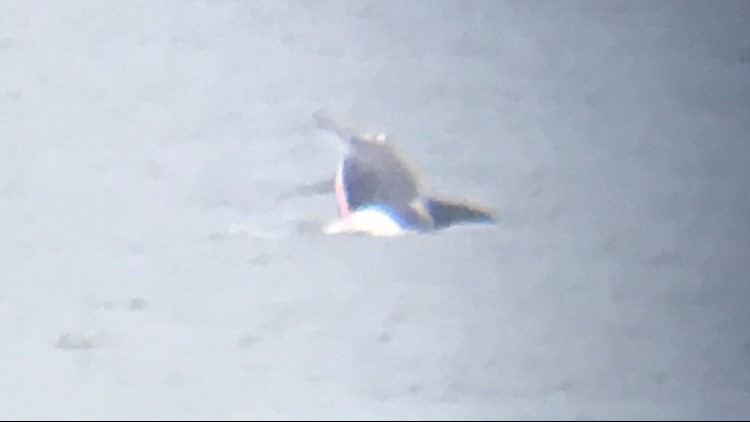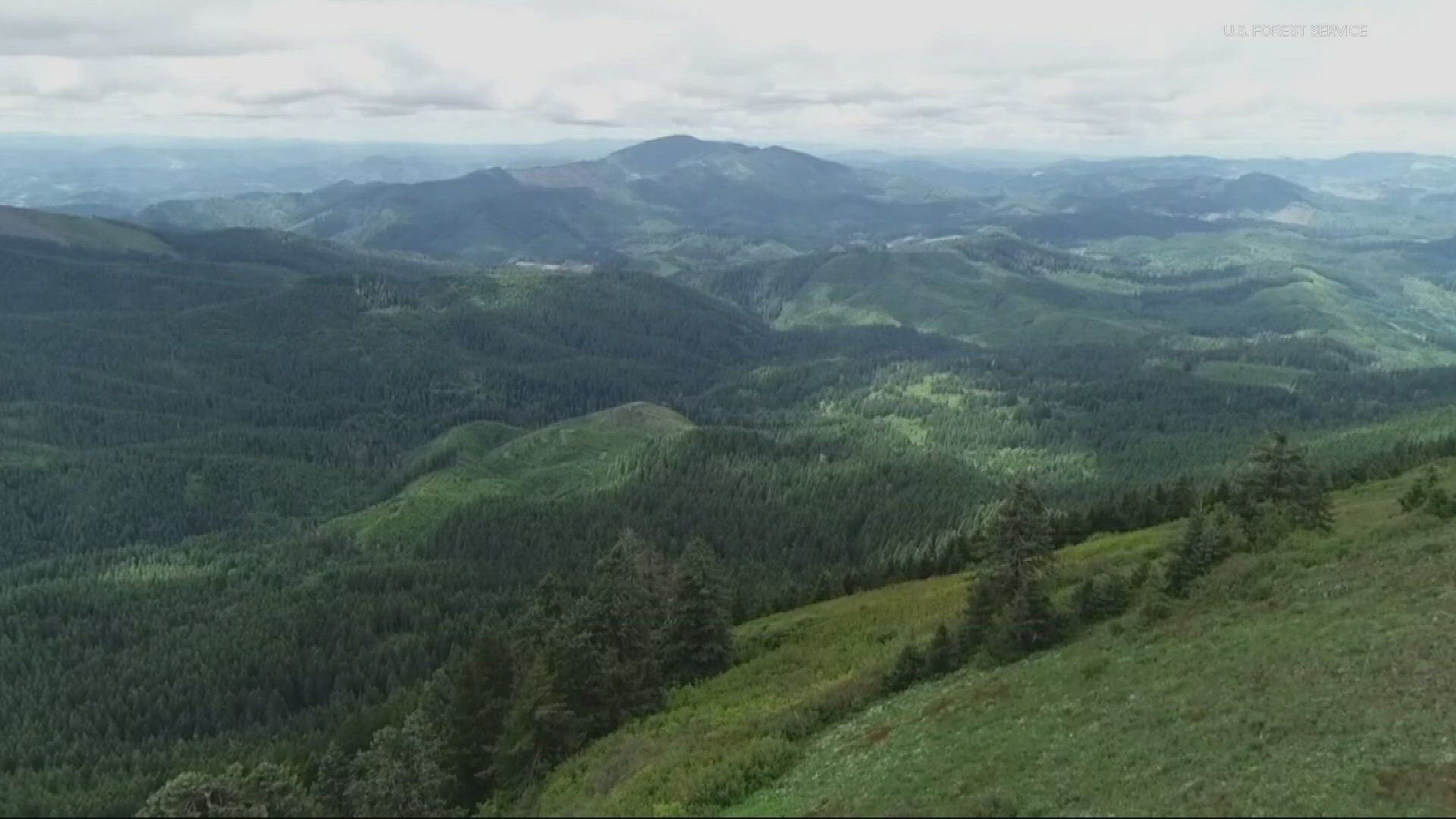ASTORIA, Ore. (AP) — Kristin Covert was on the deck of her house near the east side of the Astoria Bridge watching sailboats arrive Sunday evening for a yacht race when one boat in particular caught her eye.
She picked up a scope to get a closer look and saw a huge splash.
Her first thought was, "Whoa, that was a really big sea lion."
Then she saw orcas surface, disappear, surface again. Covert, her husband and the friends who had stopped by brought out every scope and pair of binoculars they could find, transfixed by the whales for nearly an hour.
Down on the water, the crew of the Turnagain, the sailboat that first drew Covert's attention, had front-row seats. They were about 300 yards away from a group of eight to a dozen of the animals. All the whales were breaching or bobbing up out of the water nose first — "spy hopping" — the actions of orcas celebrating a successful kill.
Pictures taken by Covert's son, Thayne, through a scope led to the identification of one of the orcas: T125A. It belongs to an orca population known as transient killer whales — mammal eaters distinct from the southern and northern resident killer whales, which dine off salmon.


Fishermen occasionally see orcas in the Columbia River plume, a rich feeding ground where the river's outflow meets the ocean, and in recent years, orcas were spotted foraging near the mouth of Washington state's Willapa Bay. In April, three to four orcas were captured on video coming into Tillamook Bay while others lingered around an entrance buoy.
But this is first time researchers can recall transient killer whales being spotted and identified in the Columbia River estuary, so near the bridge.
"In the 18 years I've been here, I've never seen anything like it," Covert said.
New hunting grounds
Still, the question isn't really why the orcas were there on Sunday. The question is: Why aren't they always in the estuary?
"I'm actually surprised they don't spend a bunch of time in there given how many pinnipeds are around," said Brad Hanson, a wildlife biologist with the National Oceanic and Atmospheric Administration's Northwest Fisheries Science Center.
One of the reasons they are not commonly seen in the estuary is likely because it is not good for the orcas to spend extended periods of time in freshwater. They are fine for a while. "But more than a week or so then they're going to start to get in trouble," he said.
Compared to the southern residents, which are listed as endangered, the transient killer whale population appears to be robust. Hanson's research involves studying the southern residents, but the transient killer whales are often used as a comparative population since their territory overlaps.
It's possible that a large prey population right now is encouraging the whales to explore areas they may not have considered in the past, Hanson said. So the possibility of people seeing orcas in places they haven't before increases.
"In fact, it's very rare for them to come that far in," said Howard Garrett, co-founder and board president of the Orca Network, a nonprofit that raises awareness about the whales in the Pacific Northwest's waters. He can't recall hearing about a transient orca on the east side of the Astoria Bridge.
"They certainly will remember it," he said.
In Washington state's Hood Canal, part of the Puget Sound basin where orcas roam, transient killer whales have come and gone three times in the last two decades, according to the organization's records. They have stayed for several days and, once, for several months.
"They will stay for an extended time and then not come back for years," Garrett said. "It's very hard to predict."
Fake Willy
For the crew of the Turnagain, the orcas topped off a day on the water that had been filled with wildlife sightings, including an encounter with feeding humpback whales. The sailboat is part of Oregon Offshore, a yacht race that begins in Astoria and finishes in Victoria, British Columbia.
Skipper Travis McGregor, from British Columbia, has seen orcas before. He follows blogs and social media accounts that keep track of where individual whales are at any given time. It's always a good experience to see them on the water, he said.
Probably the last orca most people saw in the Columbia River estuary was a replica made of fiberglass, floating upside down in the Port of Astoria's East Mooring Basin after an unsuccessful attempt to scare sea lions off the docks in 2015. The Port's efforts to haze and scare a burgeoning sea lion population have been well-documented. Most ended in complete failure.
On voyages to Astoria, McGregor has thought how the problem could be solved if all the transient killer whales that seem to perpetually flock off the shores of British Columbia headed south to the Columbia River.
"Man, those orcas should come down here and have a feast," he recalled thinking.
"And here they were."



